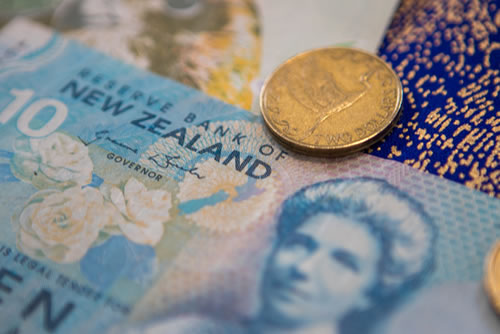The History of New Zealand Dollar
The NZ Dollar is the official currency used in New Zealand, the Pitcairn Islands, the Cook Islands, Tokelau, and Niue. This is a relatively new bill, which was first introduced in 1967. The country was a British colony between 1841 and 1907, and it became a dominion after that
| The New Zealand Pound was the official currency in New Zealand during that period. But after the country gained full statutory independence in 1947, it became clear that the money would have to change as well. It took twenty years before the official release of the New Zealand Dollar. Today, it’s a strong currency that withstood several financial crises.
It’s an interesting topic, don’t you think? Let’s talk more about it.
|
 |
How It All Started: The Common History of the NZ and Australian Dollar
Between 1840 and 1967, the NZ£ (New Zealand Pound) was the official currency in the country. It was very similar to the British Pound: one pound consisted of 20 s (shillings) of 12 d (pence) each. In the early 1930s, the country was gravely hit by the great depression.
The exchanges were controlled by the Australian banks, and it was decided for the NZ Pound to be devalued in relation to the UK currency. The Aussie Pound faced a similar fate of devaluation as an emergency measure.
After World War 2, both currencies faced another devaluation, which resulted after the fall of the UK Pound against the US Dollar. After that, it became evident that both countries would need more stable currencies. Aussie authorities followed this pattern, since they wanted to prevent their money to become overvalued in the sterling zone.
In 1960, the Decimal Currency Committee of the Commonwealth Government presented a report showing the advantages of a decimal currency system. Australia announced its new, decimal currency (AU Dollar) in 1963. New Zealand followed the pattern and passed its own Decimal Currency Act in 1964. That’s how the foundation of the new money was set.
165 million coins and 27 million banknotes were issued for the big launch. 10 July 1967 became officially known as the Decimal Currency Day.
The coins have a history of their own. They came out in denominations from 1c to 50c. The more valuable coins were produced out of cupro-nickel, and the 1c and 2c were bronze. In 1991, aluminum-bronze coins of $1 and $2 replaced the bills of the same value.
How Strong Is the NZ Dollar?
A country’s money is as strong as its economy. If the citizens have purchasing power, the currency will remain strong. It’s no wonder why NZ Dollar casinos target this particular audience and accept their national currency on their websites. International businesses of all industries will accept transactions NZ Dollar conversion without any issues.
Initially, the exchange rate of NZ Dollar to US Dollar was set at NZ$1 = US$1.43. After a long period of evolution, the NZ Dollar rate today is NZ$1 = US$0.66.
In general, the New Zealand Dollar rate remained strong, since the country’s economy is doing better than average when compared to the rest of the world. Its GDP has been rising faster than in any other developed country. The interest rates have also been comparatively high, and that’s why the currency was profitable for investment and in the gambling market as well, according to Loopx experts. The political stability in NZ is another reason why its money have remained stable over the decades.
How Did the NZ Value Shift During the Crisis 2020?
We’ve been reading the news on the world economic downfall for quite some time. If you’re interested about cryptocurrencies and traditional currencies, you know that there is a significant impact on all markets. The long period of stability for NZ money ended in January 2020, when the currency started its fast devaluation against the US Dollar.
On March 20th, the average exchange rate was NZ$1 = US$0.575. That was the lowest exchange rate we’ve seen in a decade. Since then, the rate has improved and it recently got to a one-year high. The NZ Dollar news is relatively optimistic. The year 2020 imposes uncertainty in currency markets on a global level.
So-called safe haven money, like the Japanese Yen, Swiss Franc, and US Dollar, are expected to move higher in secure times. The NZD is known as a commodity currency, similar to the CAD, AUD, and the money of most other countries. At the moment, the United States Dollar is falling, and that’s why the NZ Dollar forecast remains positive.
The uncertainty in the country adds a dose of pessimism to the forecasts. In case of a deeper crisis, the country’s imports/exports and tourism will take the hit, and so will the entire economy.
How will the weaker currency affect NZ citizens? If they live abroad and they still use money from their own country (this is the case with many New Zealanders living in Australia), they will be affected by the devaluation. On the other side, the country can expect an increased number of tourists as the currency’s value drops, since the lifestyle will become cheaper for foreigners.
Currencies Are Fun
It’s great when you know more about the money that you use on a daily basis. Foreign money is also fun to learn about. You can use that knowledge to trade with currencies, and you’ll definitely benefit from it if you travel a lot.
The Kiwi is one of the top ten currencies for trading on a global level. Despite the hit it got 2020, it remains strong. Now that you know more about it, don’t you like it even more?
|